Serviços Personalizados
Journal
Artigo
Indicadores
-
 Citado por SciELO
Citado por SciELO -
 Acessos
Acessos
Links relacionados
-
 Similares em
SciELO
Similares em
SciELO
Compartilhar
Silva Lusitana
versão impressa ISSN 0870-6352
Silva Lus. vol.19 n.Especial Lisboa 2011
Survival and Vigor of Eucalyptus Species in Morocco and Relation with Attacks of Phoracantha semipunctata Fabricius (Coleoptera: Cerambycidae)
Khadija Kissayi
École Nationale Forestière d'Ingénieurs. BP 511 Tabriquet Salé MOROCCO
Abstract
Although eucalyptus is regarded as having resistance to various insect pests and diseases, it can also suffer from heavy attacks by the eucalyptus longhorned borer, Phoracantha semipunctata (Fab.). In Morocco, this introduced pest was reported for the first time in Selouane, 9km from Nador, by Chararas in 1973. The species appears to have been rare until 1980-1981, but the exceptional drought occurring from 1980 to 1986 probably contributed to its installation and dispersal in Morocco. Nowadays this pest can be found widespread throughout the country, from Oujda in the east to the Atlantic coast and from Tangiers in the north to Agadir in the south. In this study we compare the resilience of different eucalyptus species from various arboretums within Morocco and the relation with attacks by the longhorned borer. The results reveal the existence of differences in adaptation of the different eucalyptus species according to their biotope and bark, influencing their susceptibility and resistance to attacks by P. semipunctata.
Key words: Eucalyptus; Phoracantha semipunctata Fabricius; Coleoptera; Cerambycidae; adaptation; Morocco
Sobrevivência e Vigor de Espécies de Eucaliptos em Marrocos e Relação com Ataques de Phoracantha semipunctata Fabricius (Coleoptera: Cerambycidae)
Sumário
Embora os eucaliptos sejam considerados como tendo um elevado grau de resistência ao ataque de pragas e doenças, por vezes podem sofrer ataques intensos de insetos tais como a broca do eucalipto, Phoracantha semipunctata (Fab.). Em Marrocos esta praga introduzida foi detetada pela primeira vez na zona de Selouane, a 9km da cidade de Nador, por Chararas em 1973. Este inseto aparenta ter sido raro até 1980-1981, quando uma seca severa que durou de 1980 a 1986 provavelmente contribuiu para a sua instalação e dispersão em Marrocos. Atualmente esta praga pode ser encontrada dispersa por todo o país, desde Oujda a Este até à costa Atlântica a Oeste, e de Tânger a Norte a Agadir no Sul. Neste trabalho compara-se a resiliência de diferentes espécies de eucaliptos plantados em diversos arboretos e a sua relação com ataques da broca do eucalipto. Os resultados revelam a existência de diferenças na adaptação das espécies de acordo com o seu biótopo e casca, que condicionam e influenciam a sua suscetibilidade e resistência aos ataques de P. semipunctata.
Palavras-chave: Eucaliptos; Phoracantha semipunctata Fabricius; Coleoptera, Cerambycidae; adaptação; Marrocos
Introduction
Because of its vigor, productive potential, genetic and ecological diversity and adaptation to different climates, eucalyptus has been used all over the world in reforestations, particularly in Morocco. The first plantations were undertaken by the Division of Research and Forest Experimentation in arboreta, to assess their adaptation to Moroccan climatic and soil conditions.
Very well adapted to all bioclimatic stages and to the different soils of Morocco, their economic role is nowadays incontestable. These trees are essentially destined for the production of pulp, although they can also be used as wood for the mining industry, telephone posts and charcoal. The eucalyptus leaves are also used in the pharmaceutical industry. Additionally, the flowers are an abundant source of nectar for bees and, as the flowering of annual plants is preceded and prolonged by the flowering of the eucalyptus, these trees provide a considerable increase in honey production. The tannins recovered from the bark constitute an additional product of the eucalyptus, being used in the leather industry.
Although eucalyptus is generally considered to have great resistance to insects and diseases, frequent attacks by the eucalyptus longhorned borer, Phoracantha semipunctata, have been reported. This pest was mentioned for the first time in Morocco by Chararas in May 1973, detected in Selouane, 9 Km from the city of Nador.
During the first years after its introduction, the species appears to have been rare but the exceptional drought from 1980 to 1986 probably contributed to its installation and subsequent dispersal. Nowadays the pest can be found widespread all over the country, from Oujda in the east to the Atlantic coast and from Tangiers in the north to Agadir in the south.
Materials and methods
Cartography was done of all species of eucalyptus planted in the following arboreta
1. The arboretum of Ain–Assou, oriental Maâmora, 7Km from the forest station, planted in 1958-1959; it includes 19 species of eucalyptus. Its global surface is 30,96ha; altitude 125 meters. The Lambert coordinates are 426.5 and 397.5.
2. The arboretum of Menager (also named the Smento Nord arboretum), created by Menager, located 5Km to the south/south-west of Sidi-Yahia du Gharb; plantation from 1950-1954. Total surface of 22ha. Lambert coordinates 408 and 402; altitude 30 meters.
3. The arboretum of Sidi Mbarek, 10Km east of Larache, close to the road to Tlat Rissani. Surface 10,5ha, plantation 1961-1962.
4. The arboretum of Izarene, 10Km east/north-east of Ouezzane, 8000ha, altitude between 350 and 650meters; first plantations from 1956 to 1962, 34°19' 34°46'N and 6°25' 6°30'W.
In all locations an exhaustive count of all planted trees and an evaluation of their sanitary status were made.
Survival of the trees and their vigor was calculated as:
Results
Three situations were observed in the arboretums studied (Tables 1 to 4):
* species with good local adaptation;
* species with fair adaptation;
* species with weak adaptation.
Table 1 - Classification of the species of eucalyptus according to their decreasing vigor rate at the arboretum of Ain Assou
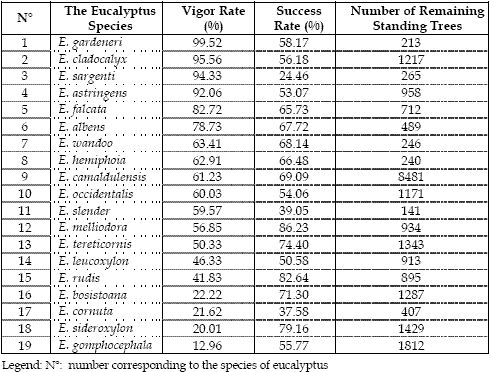
Table 2 - Classification of the species of eucalyptus according to the decreasing vigor rate of Sidi M'Barek arboretum
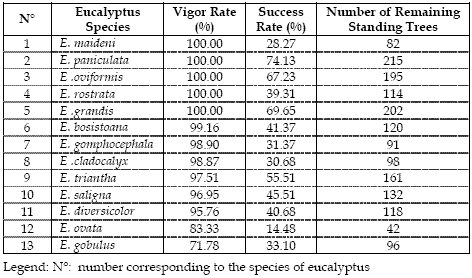
Table 3 - Classification of the species of eucalyptus according to the decreasing vigor rate of the Menager arboretum
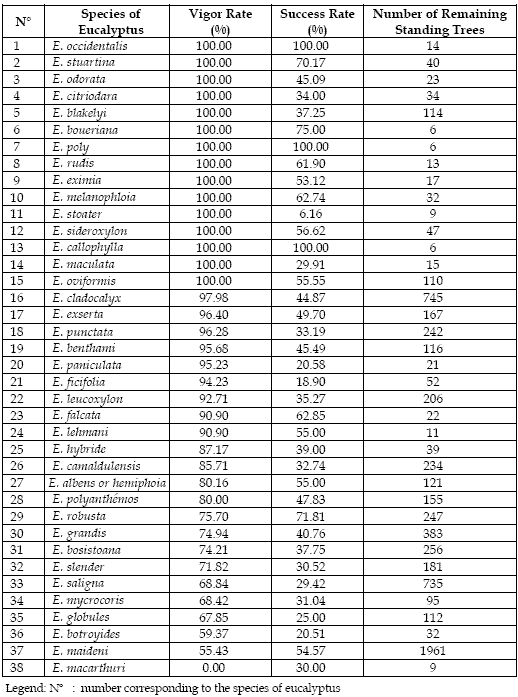
Table 4 - Classification of the species of the eucalyptus according to the decreasing vigor rate of the Izarene arboretum
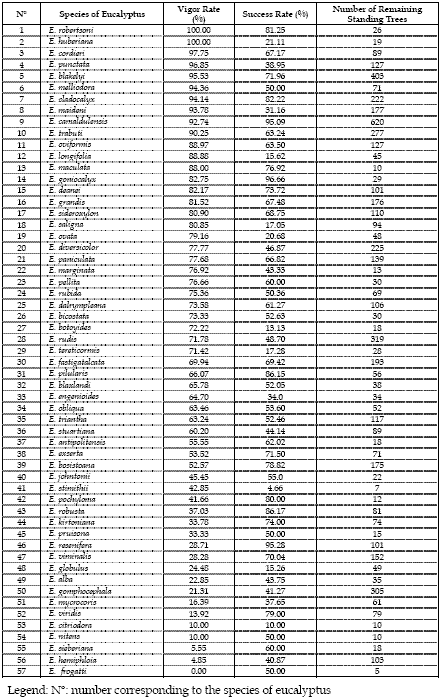
For the arboretum of Ain Assou, if we take the diagram of adaptation into account (Figure 1), four groups of eucalyptus can be seen. The first group is composed of species whose rate of vigor and rate of success are superior to 50%. The second group includes those with a rate of vigor above 50% and a rate of success lower than 50%. The third group is constituted by the species with a rate of vigor lower than 50% but a success rate higher than 50%. Finally, the fourth group is composed of species whose rates of vigor and success are both lower than 50%.
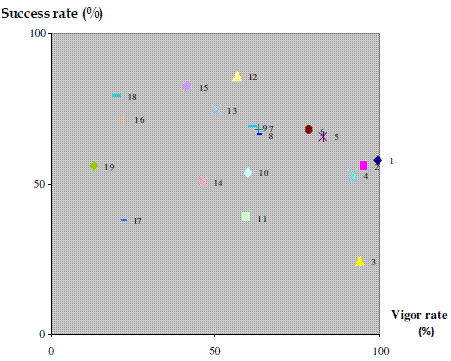
Figure 1 - Adaptation Diagram of Ain Assou arboretum
Furthermore, if we consider the rate of vigor it reveals the species that over the years have resisted better to the conditions of each station. The results reveal that the most well adapted species are E. gardeneri, E. cladocalyx, E. sargenti, E. astringens, E. falcata, and E. albens. Moderately adapted species are E. wandoo, E. hemiphloïa, E. camaldulensis, E. occidentalis, E. slender, E. melliodora and E. tereticornis. Finally, the least adapted species, with the highest pest damage, are E. leucoxylon, E. rudis, E. bosistoana, E. cornuta, E. sideroxylon and E. gomphocephala.
The diagram of the Sidi M'Barek arboretum (Figure 2) shows that the trees are very vigorous. This is due to the geographical situation of the station, having a climate with humid, mild winters and an annual rainfall of 900-1000 mm. In spite of these favorable conditions, we have detected some attacks of P. semipunctata, which may be related to the drought period that occurred in the previous years.
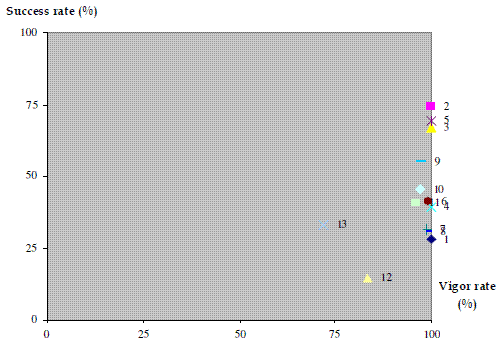
Figure 2 - Adaptation Diagram of Sidi M'Barek arboretum
In the Menager arboretum all (Figure 3) species of eucalyptus have a vigor rate over 50%, except for E. marcarthuri. However, in terms of best adaptation, we propose the following species as indicated for planting in the perimeters of reforestation near that location: E. occidentalis, E. stuartina, E. boueriana, E. rudis, E. eximia, E. pollyan, E. melanophloïa, E. callophylla, E. oviformis, E. falcata, E. lehmani, E. albens, E. robusta and finally E. maidenii.
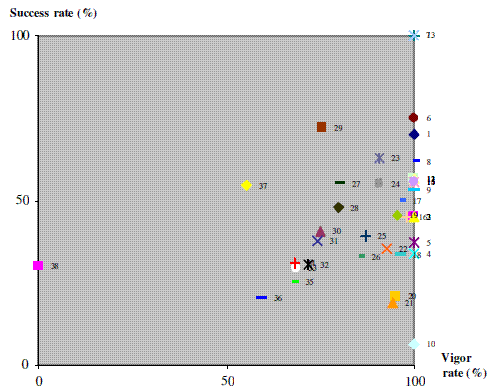
Figure 3 - Adaptation Diagram of Menager arboretum
The observations made in Izarene reveal species whose rate of vigor is 100%, such as E. robertsoni and E. huberiana. Otherwise, the adaptation diagram (Figure 4) shows the existence of four groups of species: rate of vigor and success superior to 50%; rate of vigor superior to 50% and a rate of success lower than 50%; rate of vigor lower than 50% and rate of success superior to 50%; and finally the last group, formed by species whose rate of vigor and success are both lower than 50%.
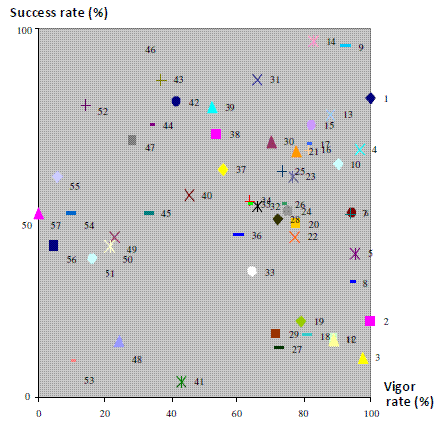
Figure 4 - Adaptation Diagram of the Izarene arboretum
Table 5 - Average rate of success (in %) of selected eucalyptus species in the four arboreta
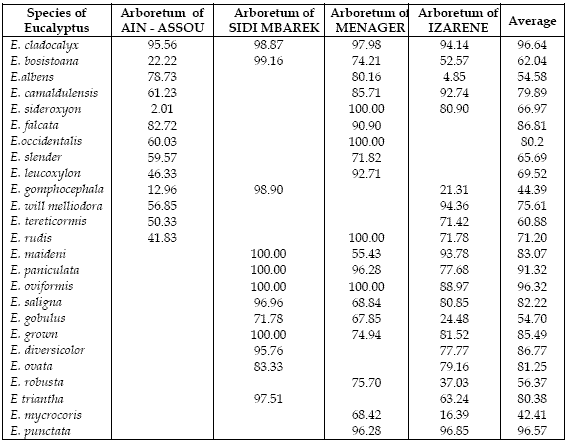
Discussion
In spite of their ecological plasticity, eucalyptuses have some pedological and climatic requirements which have to be respected in new plantations. In general, the eucalyptus introduced into Morocco adjusted well, before the severe drought of 1980-86, which prompted P. semipunctata attacks.
However, the results showed that some species are very well adapted and highly vigorous in spite of the severe drought, such as E. sargenti, E. astringens, E. falcata, E cladocalyx and, less frequently, E. camaldulensis. These same species have also shown some resistance to P. semipunctata, which might in part be due to their nutritional value, in contrast with the species with rough and fibrous bark that have been greatly damaged by the longhorned borer over the years.
In conclusion, there appears to be a strong relationship between the choice of trees by P. semipunctata and their hydrologic stress and general vigor, along with other factors such as origin of the seed and conditions of growth and maintenance. Finally, the xerophilous species of eucalyptus seem to be better adjusted to Morocco than the other groups of eucalyptus such as the calcicoles.
References
ALLARD, J., 1975. Organisation du travail dans les plantations forestières d'eucalyptus au Maroc. Doc. D.R.E.F., Rabat, Maroc, 12 pp. [ Links ]
AMAOUN, L., EL HASSANI, A., 1982. Document Phoracantha. Doc. Dép. de Zoo. I.N.A.V. Hassan II, Rabat, Maroc, 21 pp. [ Links ]
ANONYME, 1948. L'eucalyptus. Edition Oualadi, N° 39-40, 4 pp. [ Links ]
BENABID, A., 1984. A propos de l'écologie des essences forestières du sud-ouest australien et méditerranéen. Application au Maghreb. Ann. Rech. For. Tome 24: 57-99, Maroc. [ Links ]
BAETA NEVES, C.M.L., CABRAL, M.T., 1982. Contribuição para o inventário da entomofauna de E. globulus Labill. em Portugal. Ann. Sup. Agro. (Lisboa), pp. 258-263. [ Links ]
BOULHOL, P., 1952. Législation forestière marocaine. Revue Forestière Française 64: 232-246. [ Links ]
BROWN, J., 1953. L'arbre australien s'étend sur le monde. Revue du bois et ses applications, pp. 1-7. [ Links ]
BEGUE, M.L., 1960. Rapport régional pour l'Afrique. 2ème conf. mond. sur l'Eucalyptus. São Paulo, Brasil, pp.192-203. [ Links ]
CLAUDEL, M., 1953. Les reboisements industriels du Gharb. Revue économique du Gharb, pp. 50-59. [ Links ]
CHARARAS, C., 1973. Aperçu général sur les insectes parasites des forêts et leur importance au Maroc. Doc.,D.R.E.F., Rabat, Maroc, pp. 30-38. [ Links ]
CLAUDOT, J., 1960. Génétique des eucalyptus (Méditerranée). Travail d'amélioration des eucalyptus cultivés au Maroc. 2ème conf. mond. sur l'eucalyptus. São-Paulo, Brasil, pp. 318-334. [ Links ]
CLAUDOT, J., 1966. I- La station de Recherches et d'Expérimentations Forestières de Rabat; II- Les introductions d'espèces forestières au Maroc; III- L'arboretum de l'oued Cherrate. 6ème Congrès Forestier Mondial. Madrid, 10 pp. [ Links ]
CLAUDOT, J., 1968a. Recherche forestière marocaine. Doc. D.R.E.F., Rabat, Maroc, 5 pp. [ Links ]
CADAHIA, D., 1980. Proximidad de dos nuevos enemigos de los eucalyptus en Espana. Bol. Serv. Plagas 6: 165-192. [ Links ]
CAVALCASELLE, B., 1971. Il tardo dell'eucalito (Phoracantha semipunctata Fabr.): biologia e mezzi di lotta. Estratto da " cellulosa e carta ", N° 4 - Aprile, Rome, pp. 17-22. [ Links ]
DEMAY, F., 1983. Le parasitisme des eucalyptus par Phoracantha semipunctata à Huelva (Espagne). I.N.A., labo. Zoo., Paris, France, 15 pp. [ Links ]
DURANT, R., 1968. Étude pédologue de la forêt du Rmel. Extrait du rapport 1968-1969. Tome n° 11, D.R.E.F., pp. 121-124. [ Links ]
GONZALEZ TIRADO, L., 1987. Tabla de vida para Phoracantha semipunctata Fab. (Col. Cerambycidae). Perferador de los eucaliptos, en sudeste español. Bull. san. vég. Plagas 13: 283-301. [ Links ]
KISSAYI, Kh., 1987. Le rôle de certains facteurs dans l'attraction et le développement de Phoracantha semipunctata FABR. (Coléoptère: Cerambycidae) xylophage ravageur des eucalyptus. Mém. C.E.A. Eco. An. et Génét. Pop. Fac. Sc. Rabat, 38 pp. + ill. + Ann.
KNOCKART, C., AIT HAMMOU, B., 1979. Tarifs de cubage par l'Eucalyptus camaldulensis, origine Lake Albacutya. Ann. Rech. For. Tome 19: 3-14. [ Links ]
KNOCKART, C., 1984. Production et densité de plantation de l'Eucalyptus sideroxylon dans la forêt de la Mamora et de Ben-Slimane. Ann. Rech. For. Tome 24: 101-125. [ Links ]
LÖYTTYNIEMI, K., 1980. Control of Phoracantha beetles. Research note n° 24, Division of Forest Research, Zambia, 15 pp. [ Links ]
LACAZE, J.F., 1960. Résistance des eucalyptus aux basses températures. 2ème Conf. Mond. sur l'eucalyptus, São Paulo, Brasil, pp. 471-484. [ Links ]
MEKKAOUI, A., 1986. Production et comportement des Eucalyptus dans deux arboretums de la région de Settat: Arboretum de Bir Baouch Arboretum de Koudiat al Ghabat. Doc. I.N.A.V. Hassan II, Rabat, 77 pp + Ann. [ Links ]
MENEGER, M.H., 1953. La forêt artificielle du Gharb. Revue économique du Gharb pp. 60-62. [ Links ]
METRO, E.A., 1949. Écologie de l'eucalyptus, son application au Maroc. Soc. Sc. Nat., Maroc. 49: 49 pp. [ Links ]
METRO, E.A., 1950. Possibilité d'emploi des eucalyptus dans les reboisements en France. Ann. de l'école Nat. des E. et F. et de la D.R.E.F., Tome XII, Fasc. I : 271-319. [ Links ]
METRO, E.A., 1955. Principaux résultats obtenus dans les arboretums d'eucalyptus du Maroc. Extrait des rapports annuels 1953-54-55 (Fasc. I), D.R.E.F., Rabat, pp. 23-29. [ Links ]
METRO, E.A., SAUVAGE, Ch., 1955. Flore des végétaux ligneux de la Mamora. La nature au Maroc, I, Rabat, 498 pp. [ Links ]
METRO, E.A., DE BEAUCORPS, G., 1958. Influence des peuplements d'eucalyptus sur l'évolution des sols sablonneux du Gharb. Revue Fertilisation 4: 3-13 Rome. [ Links ]
POWELL, W., 1982. Age-specific life-table dator for the eucalyptus boring beetle, Phoracantha semipunctata (F.) (Coleoptera: Cerambycidae) in Malawi. Bull. Ent. Res., 72: 645-653. [ Links ]
PARENZAN, P., 1976. La Phoracantha semipunctata FABR. (Coleoptera: Cerambycidae) nell'Italia meridionale. Istituto di Entomologia dell'Universita de Bari, Italy, pp. 9-20. [ Links ]
PLATEAU, H., 1953. Au secours du sol marocain. Revue économique du Gharb, pp. 37-49. [ Links ]
QUESTIENNE, R., 1979. Note bibliographique sur les insectes nuisibles aux eucalyptus. Doc. D.R.E.F., Rabat, 12 pp. [ Links ]
SCRIVEN, G.T., REEVES, E.L., LUCK, F., 1986. Beetle from Australian threatens eucalyptus. California, Agric. 40(7-8): 4-6. [ Links ]
SOULERES, G., 1960. Eléments concernant la sylviculture des boisements d'eucalyptus (Maroc). 2ème Conf. Mond. sur l'eucalyptus, São-Paulo, Brasil, pp. 715-735. [ Links ]
TRABUT, L., 1921. Utilisation des eucalyptus dans le nord de l'Afrique. Bull. de le D.R.E.F. [ Links ],
ZOUHRI, M., 1983. Contribution à l'étude du comportement de quelques espèces d'eucalyptus dans l'arboretum d'Ouled Naïm. Mém. Ing. I.N.A.V. Hassan II, Rabat, 95 pp + Ann. [ Links ]













